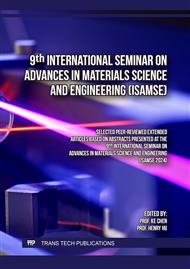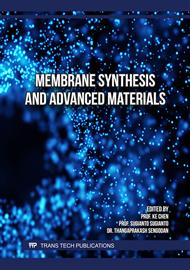p.41
p.53
p.61
p.69
p.81
p.91
p.97
p.103
p.109
Design and Experiment of Cryogenic Steel Used for Liquid Cargo Tank of Carbon Dioxide Carriers
Abstract:
With the proposal of carbon peaking and carbon neutrality and the need for environmental protection, carbon dioxide capture, utilization, and storage (CCUS) technology has become a focus of attention and brought great vitality to the corresponding industries. Many energy and chemical companies are trying to use this technology to reduce carbon emissions, and liquefied carbon dioxide carriers are an indispensable link in this industrial chain. In the process of carbon dioxide transport, both low temperature and high pressure are used to make carbon dioxide liquefied. Therefore, the material of carbon dioxide storage tanks should not only have high strength but also have good low-temperature toughness and crack resistance. In this paper, a high-strength and low-temperature steel with a thickness of 50 mm was developed. The steel is designed to be micro-alloyed by Nb and Ti, and alloy elements of Cr, Ni, and Mo are added to ensure high strength up to 690 MPa grade. The mechanical properties of the steel sheets fully meet the requirements of the standard EN10028-6. The microstructure of the steel plate is mainly tempered martensite. The ultrasonic flaw detection quality of the steel plate meets the requirements of the T1 level of standard NB/T47013.3. The mechanical properties of the steel sheets keep to a high level after PWHT. This newly developed steel meets the following requirements of a carbon dioxide transport ship storage tank.
Info:
Periodical:
Pages:
97-101
Citation:
Online since:
December 2024
Authors:
Price:
Сopyright:
© 2024 Trans Tech Publications Ltd. All Rights Reserved
Share:
Citation:



